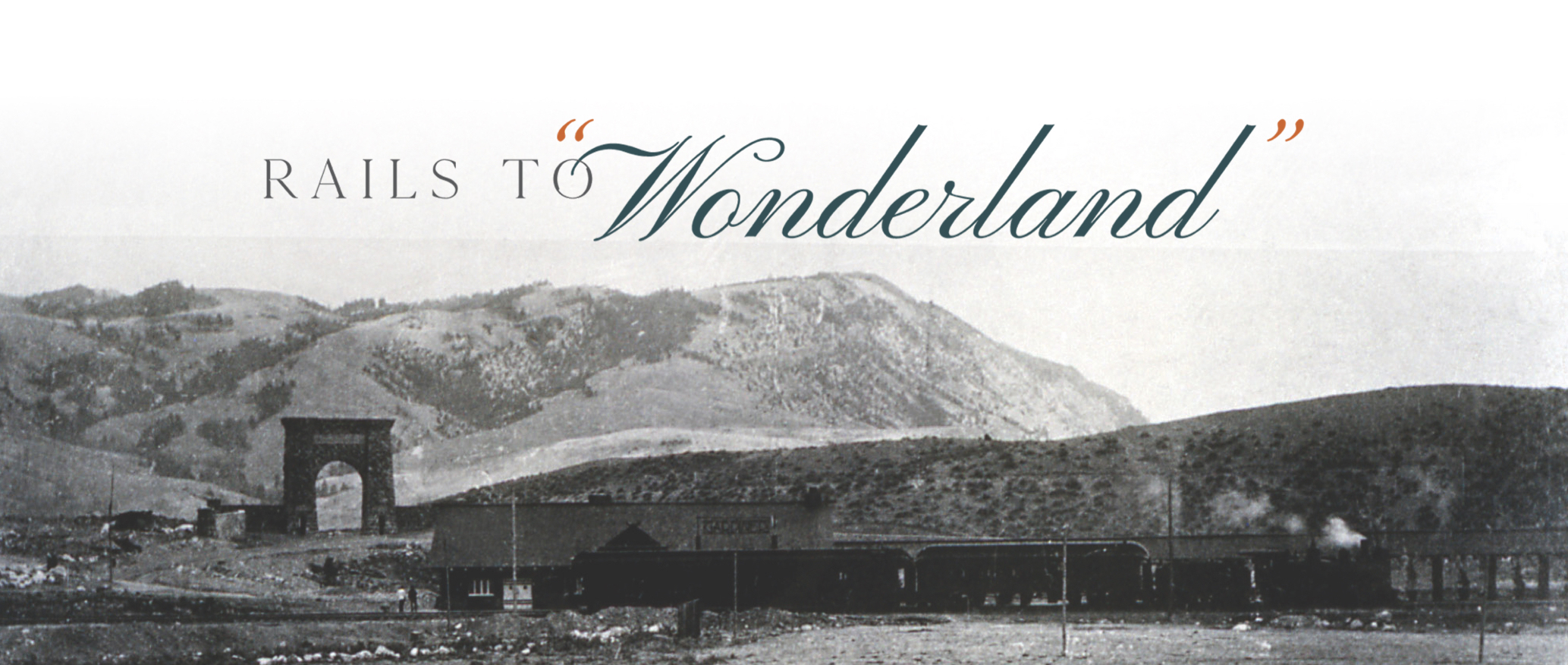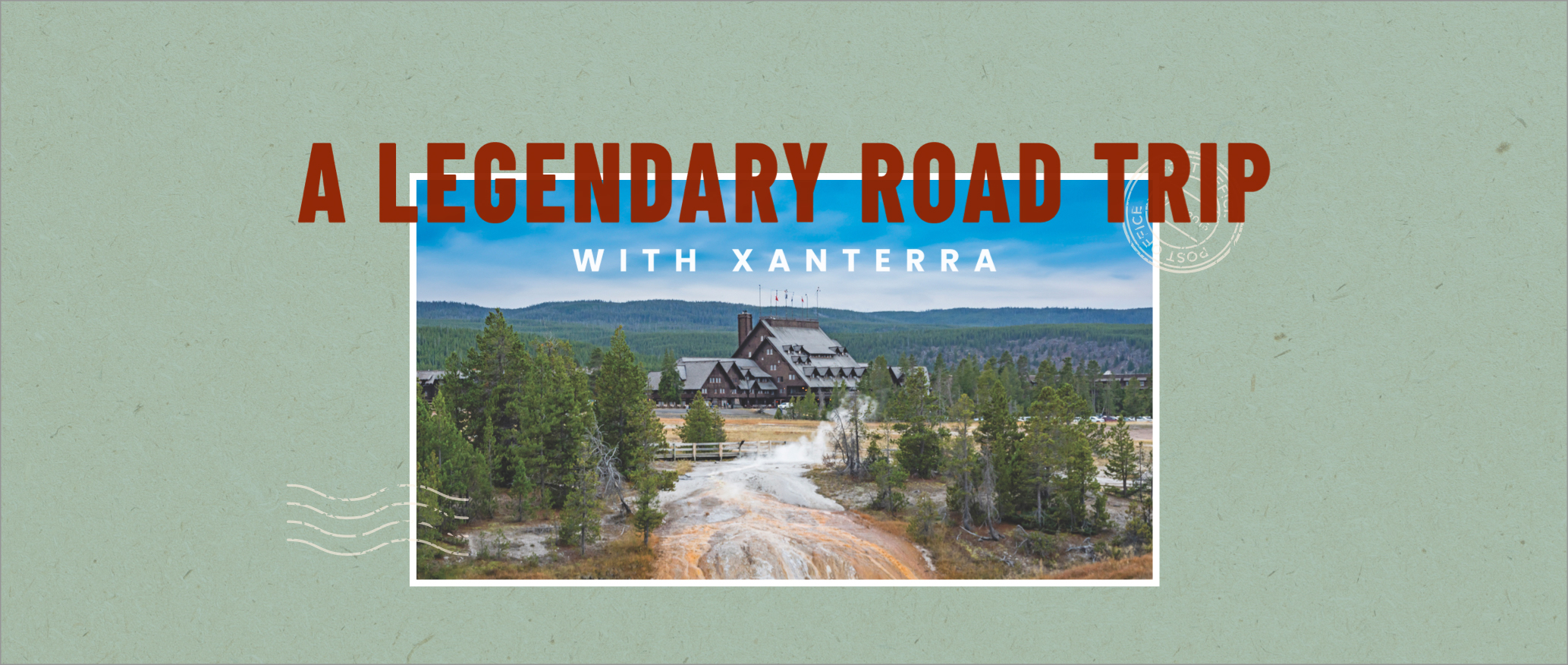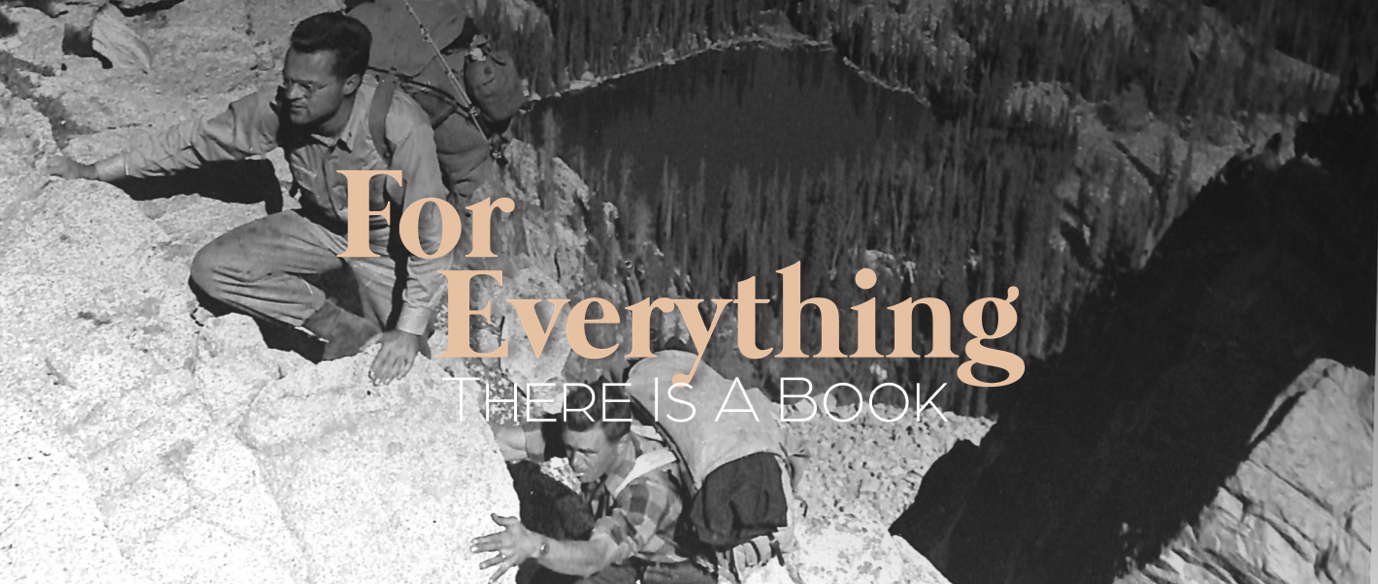They’ve been at it for five hours already, mixing gravel, broken rock, sand and cement into concrete that will soon be wrought into a slender Melan arch bridge stretching 120 feet across the great river. In another three hours, these 50 men will be replaced by the next shift and enjoy 16 hours of rest before they once again take up the hoes, shovels, and wheelbarrows so the work can continue uninterrupted—the bridge will be made in one continuous pour of concrete to prevent any visible seams.
In the bridge’s place is a vast array of lumber. A temporary pier stands in the middle of the river with planks extending from it to each rocky bank. Resting atop this pier, wooden scaffolding sketches out the shape of the bridge to come—a delicate, improbable curve. Beneath it all the Yellowstone rages, spilling through a chute of rock towards the Upper Falls a short way downstream. One worker nearly made this deadly swim after falling into the churning water while building the pier; but providence carried him to an eddy and he escaped to shore relatively unscathed.
The man in charge of this moonlight operation is Hiram Martin Chittenden. As Yellowstone’s chief engineer, Chittenden oversees all engineering and infrastructure projects in the park, and right now, he has his hands full. This spring he broke ground on a road up to Mount Washburn, a difficult route that involved blasting copious amounts of rock from the side of the mountain, and Chittenden and his engineers are nearing completion on a towering entrance gate in Gardiner that will greet visitors at the park’s north end.
When Chittenden first came to Yellowstone, its roads were abysmal, its infrastructure ill-equipped to support visitors. But that wouldn’t last. He would transform it, laying new roads, erecting new monuments, and setting a precedent for how—and why—to build in a national park.
BY FISCHER GENAU
August 8, 1903. In the light of a full moon, fifty men toil behind hoes, shovels, and wheelbarrows on the banks of the Yellowstone River.

Hiram Chittenden in 1890, a year before he first arrived in Yellowstone. Photo courtesy of NPS
Upon his arrival in the park in spring of 1891, Chittenden was ill. He’d been stricken by typhoid fever while working as an engineer on the Missouri River Commission, and he had yet to fully recover from the burning fever, fatigue, headaches, and stomach pain that had racked his 31-year-old body. But none of that stopped him from getting straight to work. Chittenden’s first assignment was to lay out a road 15 miles from the Firehole River to the west thumb of Yellowstone Lake, and he did so with only two assistants, a hand level, and a five-foot stick.
The Yellowstone that greeted Chittenden was still in its infancy—it was founded just 21 years prior—and its roads were barely developed. Their surfaces were rough and bumpy, dust billowed up when horse-drawn carriages trundled over them, and they were often in disrepair, making travel much less comfortable for the tourist. Chittenden took note of these conditions and conducted a survey with the traveling public, and most of them cited the conditions of the roads as the “principal drawback to their enjoyment of the park.” But his first tour in Yellowstone would be cut short before he could address the issue.
Chittenden left the park in 1893 for an assignment in Louisville, Kentucky, but those first two years had a profound impression on him. In 1895, he published The Yellowstone National Park, the first book about the United States’ first national park, wherein he describes everything from Yellowstone’s flora and fauna to its history and, naturally, its transportation. In 1899, Chittenden would return to write the next chapter.
The Yellowstone that greeted Chittenden was still in its infancy—it was founded just 21 years prior—and its roads were barely developed. Their surfaces were rough and bumpy, dust billowed up when horse-drawn carriages trundled over them, and they were often in disrepair, making travel much less comfortable for the tourist. Chittenden took note of these conditions and conducted a survey with the traveling public, and most of them cited the conditions of the roads as the “principal drawback to their enjoyment of the park.” But his first tour in Yellowstone would be cut short before he could address the issue.
Chittenden left the park in 1893 for an assignment in Louisville, Kentucky, but those first two years had a profound impression on him. In 1895, he published The Yellowstone National Park, the first book about the United States’ first national park, wherein he describes everything from Yellowstone’s flora and fauna to its history and, naturally, its transportation. In 1899, Chittenden would return to write the next chapter.
Chittenden chose the location for the Melan arch bridge over the Yellowstone River carefully, writing in a later edition of The Yellowstone National Park: “This section of the river, immediately above the Upper Falls, presented numerous sites on which an ordinary bridge could be built at no great cost; but the remarkable scenic attractions of the rapids made any ordinary structure seem out of place. Accordingly it was decided to build something worthy of the situation and a single arch of slender profile was selected…”
Chittenden generally believed that roads and infrastructure should enhance the traveler’s experience while detracting from the natural environment as little as possible, and he tried to live up to this on every engineering project he undertook in the park.
Chittenden generally believed that roads and infrastructure should enhance the traveler’s experience while detracting from the natural environment as little as possible, and he tried to live up to this on every engineering project he undertook in the park.
As work on the Melan arch bridge progressed, Chittenden was also overseeing the completion of the Roosevelt Entrance Gate in Gardiner, Montana. President Theodore Roosevelt himself had visited Yellowstone that April to place the arch’s cornerstone, and by August 15, the 50-foot-tall structure, made of hexagonal prisms of basalt, would be completed, proclaiming to all who passed through it that Yellowstone was “FOR THE BENEFIT AND ENJOYMENT OF THE PEOPLE.” The arch was Chittenden’s idea. For as much as he didn’t want to detract from existing nature, he thought that the entrance to Yellowstone deserved something grand.
Sometimes, Chittenden’s ambition exceeded the realm of possibility. Past the Roosevelt Arch, Chittenden wanted to line the entrance to the park with sequoias for visitors to marvel at as they passed under them. But after importing them from California, Chittenden watched his dream wither before his eyes as the sequoias succumbed to Yellowstone’s inhospitable landscape.
During his time in the park, Chittenden worked like a man possessed. He was known to stay at his job for 16 hours straight, day in and day out, and though he accomplished a great deal, the work eventually took a toll on him. Chittenden struggled with his health his entire life, and during the summer of 1903, he suffered multiple paralytic seizures, a sign that he couldn’t keep up the pace his work in Yellowstone demanded for long. Chittenden’s time in the park was drawing to a close.
Sometimes, Chittenden’s ambition exceeded the realm of possibility. Past the Roosevelt Arch, Chittenden wanted to line the entrance to the park with sequoias for visitors to marvel at as they passed under them. But after importing them from California, Chittenden watched his dream wither before his eyes as the sequoias succumbed to Yellowstone’s inhospitable landscape.
During his time in the park, Chittenden worked like a man possessed. He was known to stay at his job for 16 hours straight, day in and day out, and though he accomplished a great deal, the work eventually took a toll on him. Chittenden struggled with his health his entire life, and during the summer of 1903, he suffered multiple paralytic seizures, a sign that he couldn’t keep up the pace his work in Yellowstone demanded for long. Chittenden’s time in the park was drawing to a close.

During construction, wooden scaffolding outlines the shape of Chittenden’s Melan arch bridge over the Yellowstone River. One worker fell off the structure while building the wooden pier and narrowly avoided being swept over the waterfall downstream. Photo courtesy of NPS
When Chittenden left the park for good in the fall of 1905, Yellowstone’s Grand Loop was finally complete. Visitors to Yellowstone could travel from Mammoth Hot Springs to Old Faithful to Yellowstone Lake and back in one unbroken circle, traversing roads that Chittenden had designed to be “as perfect as possible” and built in a way that “would best develop the scenery,” he later wrote.
A comprehensive list of Chittenden’s accomplishments in Yellowstone runs long. In addition to the Melan arch bridge over the Yellowstone, the Roosevelt Arch in Gardiner, and the road over Mount Washburn, Chittenden brought electricity to the Mammoth Park Headquarters, laid down sod for the lawns there that still attract deer and elk each summer, installed a micro hydroelectricity plant and a series of irrigation ditches, and constructed over 400 miles of road, all with rudimentary tools and often insufficient funding. He did this all in six years.
Yellowstone historian Alicia Murphy speculates that his chronically poor health might have contributed to his almost compulsive need to get things done and affect real change.
“I think he was very passionate,” Murphy said. “People in the army and people who worked with him once he was out of the Army acknowledged that he was really a dynamo as far as getting things done.”
A comprehensive list of Chittenden’s accomplishments in Yellowstone runs long. In addition to the Melan arch bridge over the Yellowstone, the Roosevelt Arch in Gardiner, and the road over Mount Washburn, Chittenden brought electricity to the Mammoth Park Headquarters, laid down sod for the lawns there that still attract deer and elk each summer, installed a micro hydroelectricity plant and a series of irrigation ditches, and constructed over 400 miles of road, all with rudimentary tools and often insufficient funding. He did this all in six years.
Yellowstone historian Alicia Murphy speculates that his chronically poor health might have contributed to his almost compulsive need to get things done and affect real change.
“I think he was very passionate,” Murphy said. “People in the army and people who worked with him once he was out of the Army acknowledged that he was really a dynamo as far as getting things done.”

A map of Yellowstone sketched by Philetus Norris, the park’s first superintendent, in 1879 showing his proposed roads that would eventually form the Grand Loop. Photo Courtesy of NPS
Reflecting on his career in Yellowstone, Chittenden would later write the following:
“This work, which embraced the construction…of about four hundred miles of mountain roads, was of absorbing interest, and it is a matter of no especial credit that the author should have given to it, from beginning to end, the utmost of his time and abilities. It was in the fullest sense a labor of love and to an unusual degree one of direct personal supervision. Disappointment there was…in the neverceasing, but rarely successful, effort to bridge completely the chasm between an ideal result and that which available resources permit. Sacrifice, too, there was, apart from the deep draught upon physical energy, in the relinquishment of opportunities of greater professional importance elsewhere, but the determination to see the work through prevailed over all other considerations. Then there was at the time the irresistible “call of the wild”—grandeur of scenery, cerulean skies, the entrancing lure of the forest trails, and those myriad other inspiring influences which make one content to accept a mountain life as one’s permanent lot. The spell was a real one and the memory of it still lingers like the aroma of a feast that is done, but with the poignant reflection that it can be no more.”
Chittenden died rather young at the age of 58 while working in Seattle after a long career as a civil engineer. Perhaps no other man left such a mark on travel in Yellowstone National Park.
“This work, which embraced the construction…of about four hundred miles of mountain roads, was of absorbing interest, and it is a matter of no especial credit that the author should have given to it, from beginning to end, the utmost of his time and abilities. It was in the fullest sense a labor of love and to an unusual degree one of direct personal supervision. Disappointment there was…in the neverceasing, but rarely successful, effort to bridge completely the chasm between an ideal result and that which available resources permit. Sacrifice, too, there was, apart from the deep draught upon physical energy, in the relinquishment of opportunities of greater professional importance elsewhere, but the determination to see the work through prevailed over all other considerations. Then there was at the time the irresistible “call of the wild”—grandeur of scenery, cerulean skies, the entrancing lure of the forest trails, and those myriad other inspiring influences which make one content to accept a mountain life as one’s permanent lot. The spell was a real one and the memory of it still lingers like the aroma of a feast that is done, but with the poignant reflection that it can be no more.”
Chittenden died rather young at the age of 58 while working in Seattle after a long career as a civil engineer. Perhaps no other man left such a mark on travel in Yellowstone National Park.
In 1962, 45 years after Chittenden’s death, perhaps his finest achievement finally met its own end. The Melan arch bridge over the Yellowstone was condemned, deemed no longer fit to support heavy car traffic, and scheduled to be replaced by a more modern bridge. But many didn’t want to see Chittenden’s work demolished. After public outcry, Yellowstone National Park spent two years investigating alternate locations for the new bridge so they could preserve Chittenden’s. But the park ultimately came to a fitting conclusion: “The site he selected for his bridge is not only the best, but is also the most logical site for a bridge across the Yellowstone River,” wrote then-Yellowstone superintendent Lemuel Garrison. After standing for 59 years, the Melan arch bridge was broken, blasted, and carried out of the park, and its replacement was christened the Chittenden Memorial Bridge in his honor.
I, for one, think Chittenden would have been glad to see his masterwork demolished. In his final revision of The Yellowstone National Park, published two years before his death, Chittenden wrote that “the greatest service which official authority can render to posterity is to maintain and transmit this possession as it came from the hand of Nature.” A derelict bridge obscuring a view of the mighty Yellowstone River would not have fit his description.
I, for one, think Chittenden would have been glad to see his masterwork demolished. In his final revision of The Yellowstone National Park, published two years before his death, Chittenden wrote that “the greatest service which official authority can render to posterity is to maintain and transmit this possession as it came from the hand of Nature.” A derelict bridge obscuring a view of the mighty Yellowstone River would not have fit his description.




















